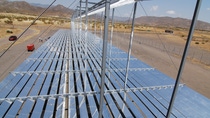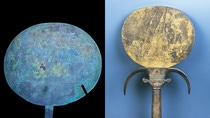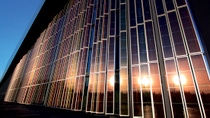Média
Storing sunshine
Solar thermal power plants convert the sun’s energy into electricity. The great bonus is that heat storage systems enable them to supply power even when the sun is not shining. Experts foresee a great future for this environment-friendly technology.
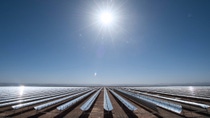
Hundreds of thousands of mirrors glisten in the desert sun. They are arranged in 800 lines, each of them hundreds of meters long. In Ouarzazate in southern Morocco, an electricity factory of superlatives is being created. This solar thermal power plant is intended to become the biggest in the world, covering the same area as about 4,000 soccer pitches. The first phase, known as Noor I, the Arabic for “light,” has been producing electricity with an installed capacity of 160 megawatts (MW) since its commissioning in February 2016. That is enough for 350,000 Moroccan households. Noor I is only the beginning: this flag-ship project, that is intended to comprise four power plants in all, is due to deliver a capacity of 500 MW by the end of 2017.
Electricity from the desert
“Solar thermal power plants concentrate sunlight to produce high temperatures. In sunny regions, they are thus able to deliver large quantities of environment-friendly electricity from a renewable source,” explains Professor Robert Pitz-Paal, Director of the Institute of Solar Research at the German Aerospace Center (DLR). Concentrating solar power (CSP) is best suited to countries with high sun intensity. The Moroccan solar park is in a perfect location: in the area around Ouarzazate, solar radiation reaches an intensity of more than 2,500 kilowatt-hours (kWh) per square meter per year, one of the highest levels in the world.
Interview with Professor Pitz-Paal
Director of the Institute of Solar Research at the German Aerospace Center (DLR)
What is Concentrating solar power (CSP), and what fascinates you about it?
Nearly everybody knows about photovoltaics or wind power, but only a few have heard of concentrating solar power, or CSP. What is the reason for this?
What is the main focus of research?

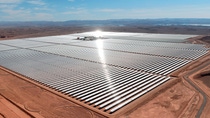
Concentrated solar power
At the Noor I facility, 537,000 computer-controlled parabolic mirrors turn constantly to face the sun, just like sunflowers. They concentrate the sun’s rays and convert them into thermal power. The slightly curved mirrors extend to a height of more than 10 meters. In the middle run pipes, in which a thermal oil circulates. This synthetic fluid, that can be heated to 393 degrees Celsius, is fed through to the power plant at the center of the huge area of mirrors, where steam is produced to drive the enormous power plant turbine. So that the electricity is also available after sunset, large heat storage units have been installed. As a result, solar thermal power plants can offer a decisive advantage in the renewable energy mix: electricity can be used around the clock.
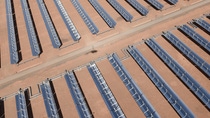
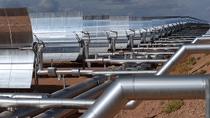
Full capacity even at night
The heat storage units at Noor I consist of two giant steel tanks. “They contain a special salt mixture of potassium and sodium nitrate, that becomes liquid at temperatures of around 240 degrees Celsius,” explains Matthias Hinrichs, PhD, Manager Solar Business and New Business Development Inorganics at BASF. In the field of storage salts, the chemical company concentrates on producing high-purity, synthetic sodium salts – and has been doing so for more than 90 years. The release of heat from the stored salt enables the full capacity of CSP plants to be maintained even at night. The salt mixtures in the storage tanks require huge quantities: for the facility in Morocco alone, BASF has produced around 27,000 metric tons of sodium nitrate in Ludwigshafen.


New investment and a jobs boom?
According to the study “Solar Thermal Electricity – Global Outlook 2016,” countries such as Morocco are thus making an important contribution to reducing emissions of green-house gases. By 2020 the countries in the “sunbelt” – those located between 40° north and south of the equator – could avoid 32 million metric tons of CO2 by using CSP. At present, Spain and the United States are top of the table for CSP capacity, but other countries are catching up. China aims to commission solar thermal power plants with a total capacity of 10 gigawatts (GW) by 2020, and Saudi Arabia is planning a CSP capacity of 25 GW by 2032. The study, which was commissioned by SolarPACES, a technology program of the International Energy Agency (IEA), Greenpeace and the European Solar Thermal Electricity Association (ESTELA), also found that the use of this climate-neutral energy source in these countries would create investments worth €16 billion by 2020 and 70,000 new jobs in the future.

